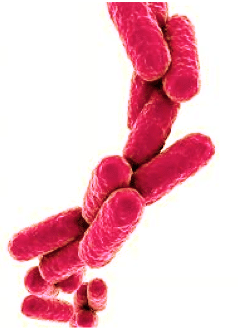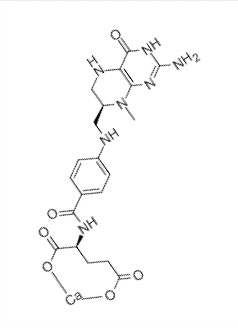If you’re anything like me, you began making health and lifestyle changes due to one of two factors: you were experiencing some sort of illness or you simply realized that you could become a much better version of yourself. It may have started with something as simple as optimizing your circadian cycle by setting a consistent time for going to sleep and awakening. Or you may have been one of those people who made a 180° change in your lifestyle and health habits: you dropped all desserts, all grains, began exercising 5 days per week, etc. Regardless of the situation, you most likely continually investigated different health avenues to bring you closer to optimal. While there are literally dozens of health ‘hacks’ one can do to improve his or her health quotient, this article will focus on three major areas: microbes, metals (toxic and heavy), and a biochemical process known as methylation.
Microbes
 When most of us hear the term “microbes”, we picture a petri dish in a lab or someone with a runny nose and a cough. But as you’ve likely heard by now, bacterial cells significantly outnumber human cells.
When most of us hear the term “microbes”, we picture a petri dish in a lab or someone with a runny nose and a cough. But as you’ve likely heard by now, bacterial cells significantly outnumber human cells.
Many of these bacteria are beneficial (symbiotic), but most of us house a number of pathogens—viruses, yeast/fungi, and bacteria—that may be slightly less innocuous. Understanding this concept requires you to alter your perception of what a pathogen is and how it operates.
Several of the most common nagging symptoms today are microbe-related—fatigue, depression, lack of concentration, insomnia and much, much more. How does this occur? In today’s stress-filled environment, replete with immune-suppressing pollutants, sleep deprivation, and nutrient imbalances, it’s quite easy for the pathogens we’re exposed to become active.
A prime example would be the Epstein-Bar Virus, aka “mono”. If you were infected with mononucleosis in high school or college after a make-out session with Johnny or Susie, you’re well aware of the swollen lymph nodes that accompanied it. But you should also remember the bone-crushing fatigue, decreased mental faculties, lack of desire to socialize, and the other nagging symptoms you experienced.
The Epstein-Bar Virus is just one of many pathogens that we’re exposed to, that likely remains dormant until a stressor comes along. When you experience a negative sign or symptom, it’s not emanating from the microbe itself, but from our immune system’s response to that “bug”. What type of stressor suppresses the immune system so much that one of these microbes becomes active? Common examples include, but are not limited to:
• Car accident
• Surgery
• Divorce
• Death of a loved one
• Job loss
• Financial stress
• Chemical or toxic exposure
You see, the pathogens described above are “opportunistic” and can sense when our defenses are weakened. Let’s briefly cover some of the lesser-known microbes that can wreak havoc on our health and how they may do so. While there exists an infinite number of pathogens, some prove to be much more commonplace than others. These include Human Herpes Virus-6, Cytomegalovirus, Coxsackie B Virus, Adenovirus, Parvovirus, and Mycoplasma, stealth, cell-wall deficient bacteria.
There exists a fair amount of overlap in the symptoms caused by these pathogens, but some are more well-known for a particular sign or symptom than others. For example, Mycoplasma is a chronic bacterial infection that hides inside of our cells and is well-known for causing severe fatigue, walking pneumonia, joint pain and swelling.
There are over 100 known species of Mycoplasma, with the most common being Mycoplasma pneumonia. One reason this microbe is labeled as a “stealth pathogen” is that it has the ninja-like ability to move into our bodily systems, including the joints, nervous system, and cardiovascular system.
In fact, it has been linked to disorders such as Gulf War Syndrome, rheumatoid arthritis, ALS, diabetes, Lupus, and many others. It also affects many bodily systems not only directly, but also indirectly. For example, our immune cells release pro-inflammatory mediators known as cytokines in an effort to deal with the microbes.
Dealing with inflammatory cytokines is like interacting with your in-laws—it’s painful! Even if you’ve never heard the term “cytokine”, you’ve most certainly experienced them. Remember the fever you had the last time you had a cold? Yep, cytokines.
Or the exhaustion you felt when you had the flu? Cytokines again. Pro-inflammatory cytokines have been shown to do everything from contributing to insulin resistance to causing a leaky blood-brain barrier—all things keeping you from optimal.
The same type of response happens with the above-mentioned viruses, such as HHV-6. A pro-inflammatory environment is created that places a constant strain on the adrenal glands. The adrenal cortex produces cortisol in an effort to calm the inflammation. This is fine in the short-term, but over time it leads to pregnenolone steal—your body sacrifices your sex hormones to produce cortisol.
For you ladies, it turns you into a raging wild beast during your cycle. For you guys, it makes a lot harder—or less (depending on your perspective)—to please your significant other. The consistently elevated cortisol leads to dysfunction of the entire hypothalamus-pituitary-adrenal axis. Most of us are familiar with the negative effects of high cortisol: anxiety, weight gain, brain fog, decreased memory through damage to the hippocampus, leaky gut and many others.
To address these negative symptoms, supplements such as Curcumin work well to lower the cytokine levels, while nutraceuticals such as glycine and Ashwaganda help to lower cortisol. The long-term solution involves bullet-proofing your immune system and taking the appropriate supplements or medications to address the infections (future article).
Metals
 Earlier we discussed some factors that may lead to a less than robust immune system. While I failed to mention it then, toxic metals, such as mercury, aluminum, lead and many others, serve to disrupt immune function significantly. Where do we acquire such a high heavy metal burden? The better question is where don’t we get exposed to toxic metals?! It has been stated that the average newborn’s umbilical cord contains over 200 well-known carcinogens. Heavy and toxic metals are easily transmissible from mother to fetus. Combine that with a tainted air, water, and food supply, and it’s easy to see how bio-accumulation of these substances occur. But they do much more than interfere with your immune function; they suppress the adrenal glands, disrupt mitochondrial function (mitochondria are the energy-producing powerhouses of our cells), lower intelligence, and interfere with thyroid function. It’s hard to achieve optimal health with a metal-filled body.
Earlier we discussed some factors that may lead to a less than robust immune system. While I failed to mention it then, toxic metals, such as mercury, aluminum, lead and many others, serve to disrupt immune function significantly. Where do we acquire such a high heavy metal burden? The better question is where don’t we get exposed to toxic metals?! It has been stated that the average newborn’s umbilical cord contains over 200 well-known carcinogens. Heavy and toxic metals are easily transmissible from mother to fetus. Combine that with a tainted air, water, and food supply, and it’s easy to see how bio-accumulation of these substances occur. But they do much more than interfere with your immune function; they suppress the adrenal glands, disrupt mitochondrial function (mitochondria are the energy-producing powerhouses of our cells), lower intelligence, and interfere with thyroid function. It’s hard to achieve optimal health with a metal-filled body.
So what can be done? Step number 1 should be to eliminate exposure as much as possible. Evaluate any personal care products at www.ewg.org for their toxic metal content. Do not use stick-free pans and software. Avoid the use of fluoride, as it allows the accumulation of aluminum. Aluminum damages the mitochondria has been closely correlated to Alzheimer’s Disease and works synergistically with other toxic metals.
Install a top of the line reverse osmosis water filtration system, along with a shower and a bath filter. While reducing one’s exposure should be step # 1, step #2 should be to optimize one’s mineral stores—magnesium, zinc, iodine, selenium, etc.
The reason for this is that many of the toxic metals such as mercury compete with magnesium, zinc, etc. for the same binding sites on our enzymes. In short, the more of the good minerals we have, the harder it is for the toxic metals to take up shop in our body.
In addition, magnesium, zinc, selenium, iodine, etc. are all needed for the detoxification pathways that properly help us to excrete toxic metals. Lastly, if the above steps aren’t sufficient enough, a process known as chelation may be needed. Chelation involves using one or more synthetic binders to pull the toxic metals out of our tissues.
From there, they are excreted via the kidneys. Optimizing our digestive health also proves to be a crucial step as toxic metals normally are excreted through the stool in a healthy body with little gastro-intestinal inflammation.
Methylation
One way that our body naturally detoxifies heavy and toxic metals is through a process known as methylation. Methylation is literally a series of chemical reactions that takes place in every cell of the body and involves adding a methyl group, consisting of one carbon atom and three hydrogen atoms. This process affects numerous physiological processes, including, but not limited to:
• Neurotransmitter production
• Detoxification
• Production of immune cells
• Controlling viral replication
• Controlling inflammation
• Mitochondrial energy production
• Creation of myelin, the fatty coating around our nerves
• Production of growth factors, which are needed to deliver fats and proteins to cells
• Production of glutathione, our body’s most potent anti-oxidant that is also involved in detoxifying heavy metals and environmental pollutants
From the list above, it is quite easy to see how nearly every bodily system is affected by methylation. The methylation cycle requires many nutrients, but the two major players are methyl folate and vitamin B12. The co-factors involved include all of the other B vitamins (thiamine, riboflavin, biotin, etc.), magnesium, zinc, lithium, and others.
So, what may go wrong with this important biochemical process? Quite simply, our DNA consists of four letters—A, T, C and G. If the “wrong” letter is placed in the wrong position, we end up with what’s referred to as a single nucleotide polymorphism, or SNP. Think of it as a biochemical glitch. This is different than a true genetic glitch (think Down’s Syndrome).
An SNP can be bypassed through dietary and lifestyle changes, along with supplementation. One can test to see if they have any of these so-called SNPs through a test such as 23andme (www.23andme.com). While there are dozens of polymorphisms involved in the methylation process, the most well-known is MTHFR or methylenetetrahydrofolate reductase.
MTHFR is the enzyme involved in converting folic acid into methylfolate, the active form of B9 required in all of the processes listed above. A test like 23andme will help one decipher if he/she has any copies of MTHFR. If one possesses one copy of this SNP, this simply means that enzyme has been slowed down by roughly 30%. If one has two copies of the MTHFR SNP, their enzyme has likely slowed down by nearly 70%.
This is important because it impacts all of the biochemical processes listed earlier, such as neurotransmitter production (which can make you a buddy or a bitch), the creation of glutathione, and the production of myelin to coat our nerves. What can be done to bypass such a genetic hiccup?
Number one is the inclusion of more green leafy vegetables in one’s diet. Green leafy veggies contain dihydrofolate, an active form of folate. Secondly, one should supplement with a combination of methylfolate(L-5MTHF) and vitamin B 12, along with all of the co-factors, such as magnesium, zinc, and the other B vitamins. It is also critically important to control inflammation, as too much inflammation inhibits the entire methylation cycle. An uncorrected methylation cycle has been connected to a host of disorders, including
• Parkinson’s
• Schizophrenia
• Pregnancy loss
• Alzheimer’s Disease
• Chronic fatigue syndrome
• Fibromyalgia
• Depression
• Heart attacks
• Strokes
• Blood clots
• Rectal cancer
• Epilepsy
• Atherosclerosis
• Tongue tie
• Placental abruption
• Asthma
• Behcet’s Disease
• Multiple Sclerosis
• Essential hypertension
• Spina bifida
• Type 1 diabetes
• Glioma
What Can Be Done?
While the supplementation and dietary changes are crucial, lifestyle changes and stress reduction/management are equally important. In fact, there are some studies linking lifestyle stress and poor nutrition in one generation to disorders several generations later.
Hopefully, by bringing awareness to three often-neglected topics—microbes, metals, and methylation—you will be able to apply this knowledge to bring you closer to your personal goal of optimal health. We discussed the topic of stealth microbes and how they alter homeostasis: by creating a pro-inflammatory state, constantly activating the HPA, interfering with blood sugar and depleting neurotransmitter stores.
Those are all important points that typically are not associated with infections. This calls for an intellectual paradigm shift. Heavy and toxic metals, while often mentioned in integrative medicine and wellness circles, are usually not well understood by most people in regards to exactly how they disrupt our physiology.
In addition, we often forget that when it comes to harmful metals, 1+1=12. In other words, the whole is greater than the sum of its parts. Lastly, the process of methylation was discussed and how it impacts nearly every bodily system. Therefore, when this series of reactions isn’t working optimally, our risk for a host of disorders increases. By making some simple dietary, lifestyle and supplementation changes, we can greatly improve our health and reduce our risk for the above-listed syndromes.
Go get optimal!
Microbes, Metals, and Methylation: Three Reasons You’re Not Yet Optimal by Dr. Tim Jackson

